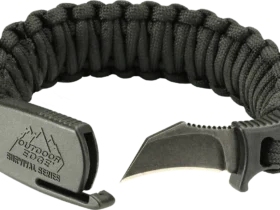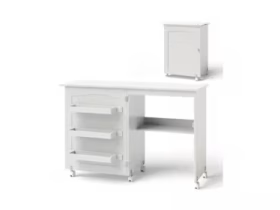Understanding Construction Cranes
When working on construction sites, cranes are crucial machines. They allow for heavy lifting and efficient movement of materials. Each type of crane is designed with specific roles in mind, providing stability and versatility for different tasks.
Essentials of Crane Design
Cranes are engineered with precision to handle heavy loads safely. Key factors in crane design include lifting capacity, height, and stability. The framework must be robust to support significant weight, while components like ropes and pulleys enhance lifting efficiency.
A crane’s base or foundation determines its stability, crucial in preventing tipping during operation. Mobile cranes have rubber tires for easy movement, whereas tower cranes have solid foundations for high-rise building projects. Understanding these essentials helps you appreciate how cranes perform such formidable tasks.
Categories and Functions
Different types of cranes serve varied purposes. Mobile cranes, for instance, offer the benefit of mobility. They can be easily transported to different sites, making them ideal for projects requiring flexibility.
Tower cranes, towering and fixed, are perfect for tall buildings and have great lifting capacities. Carry deck cranes, despite their small size, can rotate 360 degrees, improving their usability in confined spaces.
Each crane type has unique features that suit specific construction needs. Knowing these categories helps you identify the right crane for your projects, ensuring effective and safe material handling.
Mobile Cranes and Their Capabilities
Mobile cranes offer unique features and are crucial in construction due to their versatility and lifting capabilities. They adapt to different terrains, have strong stability thanks to outriggers, and cater to varied project needs.
Crawler Cranes for Rough Terrain
Crawler cranes are built for tough terrains. They move on tracks, which makes them stable on soft ground. These cranes handle heavy loads due to their robust structure. Although they are slower than wheel-based cranes, their continuous tracks allow smooth movement on muddy or uneven surfaces. For jobs in remote areas, crawler cranes provide reliable lifting power and excel where regular cranes may struggle.
The Flexibility of Truck-Mounted Cranes
Truck-mounted cranes are all about convenience. They blend power with the mobility of a truck, providing access to different job sites quickly. These cranes have a turntable, which lets you swing the arm from one side to the other. Outriggers extend for stability during lifts. For projects needing fast setup and transport across various locations, these cranes are a perfect choice.
Advantages of All-Terrain and Rough Terrain Cranes
All-terrain cranes merge the best of both worlds, working effectively both on paved roads and rough landscapes. Their multiple axles aid in maneuverability. In contrast, rough terrain cranes shine in off-road conditions. They often have four-wheel drive to move over challenging sites. Both types handle heavy loads while ensuring safety, making them valuable assets in diverse construction environments.
Fixed Cranes: Types and Uses
Fixed cranes are stationary cranes designed for specific tasks on construction sites. They are essential for lifting heavy loads and are highly efficient in urban construction scenarios.
Tower Cranes: Building the Skies
Tower cranes are the giants at construction sites. They are often used in building high-rise buildings. These cranes are known for their ability to lift heavy loads with ease. A tower crane has a tall mast and a horizontal jib or boom. The counterweights on the rear help balance the load on the jib.
You often see two types of tower cranes: luffing tower cranes and hammerhead cranes. Luffing tower cranes are perfect for tight spaces because their jib can move up and down. Self-erecting tower cranes are another variation, known for easy assembly and mobility.
Gantry Cranes: Material Handling Experts
Gantry cranes are another type of fixed crane. They move along a system of tracks to lift and transport materials over short distances. These cranes are typically used in shipyards or factories, but you may find them on construction sites too.
The crane’s structure resembles a bridge with supporting legs and a trolley. It’s exceptional for moving materials like containers and machinery. Gantry cranes help in the efficient handling of bulky and large items, contributing greatly to site logistics and flow.
Jib Cranes: Versatile and Efficient Lifting
Jib cranes are incredibly versatile. They feature a horizontal arm, or jib, attached to a vertical supporting structure. Ideal for lifting light to medium loads, they rotate in a semi-circle (180 degrees) or a full circle.
You can power jib cranes by hand or electric motors, making them flexible and useful for various tasks. They are compact, making them favored in workshops and smaller construction sites where space is limited. They excel in material handling, often found supporting other lifting operations.
Specialized Crane Applications
When it comes to construction projects, certain cranes are tailored for specific environments and jobs. These specialized cranes are designed to tackle challenges in difficult areas like marine, rail, and industrial settings.
Floating Cranes for Marine Constructions
Floating cranes are essential in marine projects. They are mounted on barge-like platforms and are perfect for lifting heavy loads over water.
These cranes are used for building bridges and docks, loading and unloading ships, and installing underwater infrastructure. They often have a large load capacity, making them suitable for tasks that involve heavy equipment and materials.
Their flexibility and mobility mean they can be positioned precisely where needed, making them indispensable in the marine construction industry.
Railroad and Harbor Cranes
Railroad cranes are vital in rail and harbor settings. Used for repairing tracks and handling large loads, they are mounted on train tracks and excel in mobility and efficiency.
Harbor cranes, including level luffing cranes, handle cargo and materials at ports. These cranes are designed to move along tracks at docks, making them perfect for loading and unloading ships.
Both types play a crucial role in infrastructure projects by ensuring smooth operations in their respective areas.
Bridge and Bulk-Handling Cranes
Bridge cranes are widely used in industrial settings. They consist of parallel runways with a traveling bridge. These cranes lift heavy materials and equipment across large areas, making them essential in factory settings and for infrastructure projects.
Bulk-handling cranes are designed to handle loose materials like coal or grain. These cranes are often used in ports and industrial settings where large amounts of bulk material need to be moved efficiently.
Both bridge and bulk-handling cranes are vital for material handling, offering efficient ways to manage heavy and bulk items in diverse environments.
Crane Safety and Advanced Technologies
In construction, ensuring crane safety and utilizing new technologies are essential. You can see how engineering innovations and best practices are making crane operations safer and more efficient.
Engineering Innovations in Cranes
Recent innovations have greatly improved crane technology. You will find that hydraulic systems are now a critical component, allowing cranes to lift heavier loads with precise control. These systems also enhance the crane’s capability to operate in tighter spaces.
Another advancement is the use of telescopic booms, which offer adjustable lengths, making them versatile for different construction tasks. Counterweights ensure stability by balancing heavy loads, which reduces the risk of accidents.
Remote controls are becoming more common, allowing you to operate cranes from a safe distance. This minimizes exposure to hazards on the construction site. Smart sensors and AI can now detect potential mechanical issues before they cause a failure, further enhancing safety.
Best Practices for Safe Crane Operations
When you’re operating cranes, safety should always be your top priority. Begin with thorough training to understand the crane’s features and controls. Regular inspections are essential to ensure everything works correctly, from the hydraulics to the counterweights.
Always consider the crane’s load capacity to avoid overloading, which could lead to structural failures. Maintaining clear communication among all team members helps to manage risks and ensure everyone knows what to expect.
Establish safety zones around the crane to keep unauthorized personnel clear of dangers. Use modern technologies like cameras and sensors for better visibility and monitoring. By implementing these practices, you contribute to a safer and more productive construction environment.
Comparing Crane Types Across Industries
Cranes serve crucial roles in various industries by lifting and moving heavy materials. You’ll find differences in their design and purpose depending on whether they’re used in construction or industrial settings.
Construction vs. Industrial Cranes
Construction cranes and industrial cranes have unique features suited to their environments. Construction cranes are built for flexibility on rough terrains like construction sites. Common types include tower cranes and crawler cranes. Tower cranes rise high, providing extended reach with stability.
Crawler cranes, with tracks instead of wheels, are great in muddy or uneven areas. Industrial cranes, on the other hand, often operate indoors. Overhead cranes and gantry cranes typify this group. They transport heavy loads within factories, offering precision and efficiency.
While construction cranes need mobility and height, industrial cranes emphasize indoor adaptability and precision.
Selecting the Right Crane for the Job Site
Choosing the right crane depends on the specific demands of the job site. For large-scale construction sites, tower cranes can handle high lifts above crowded sites. Mobile truck cranes offer mobility and speed for smaller projects.
On industrial sites, consider the space and material type. Overhead cranes work well in warehouses needing to move items quickly across distances. The loading capacity and range are critical factors. Evaluate the terrain, weight of materials, and necessary height for lifting. Understanding these variables ensures efficiency and safety in operations.







Leave a Reply